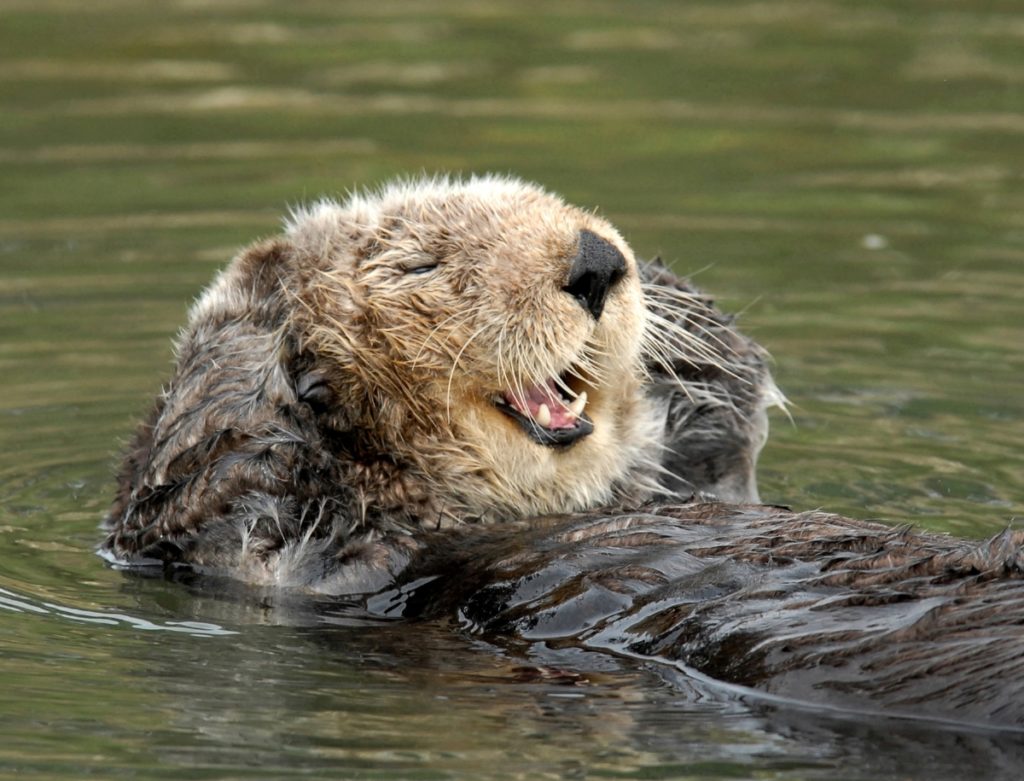For the past 30 years, Jane Watson has witnessed one of the most extraordinary underwater transformations. Year after year, on the west coast of Vancouver Island in British Columbia, she has been diving at the same sites, watching areas known as ‘sea urchin barrens’ transform into beautiful forests of 2m-tall kelp. The difference between the two environments is striking.
Watson is an ecologist at Vancouver Island University with a particular interest in kelp forests. Whenever she explores a sea urchin barren, she finds herself floating in a pink world due to the overwhelming presence of pink coralline algae. Invertebrates such as sea urchins, abalone, chitons and sea cucumbers, which thrive in the open, are all easy to see. “It’s like being on a grassland because it is an exposed environment,” Watson says. In stark contrast, diving among the waving brown kelp is like hiking in a forest teeming with juvenile fish.
Behind this transformation is the voracious appetite of an extraordinarily photogenic creature – the sea otter Enhydra lutris. It occurs in western North America and the far east of Asia, and as its name suggests is entirely marine. (Confusingly, though, it is not the only otter found in coastal waters – the Eurasian otter Lutra lutra also thrives on seashores and sea lochs, for example.) Urchins are the sea otters favourite food, and when the species arrives in an area dominated by urchins, it gets to work immediately.

“After the urchins are eaten by otters, you can see the kelp growing back in two weeks. It can be a very fast process,’’ Watson notes. On the other hand, without predator)’ sea otters to keep them in check, the herbivorous urchins soon graze the kelp to virtually nothing. This is how British Columbia’s sea urchin barrens came into being – the sea otters had been wiped out by hunting. No sea otters, no kelp forests.
BACK FROM THE BRINK – Sea otters were wiped out in British Columbia by the 19th-century fur trade. But in the late 1960s and 70s, 89 otters were reintroduced from Alaska to the west coast of Vancouver Island. They have since reproduced and expanded their range, and the population in the province is now almost 7,000 strong – in fact sea otters are doing so well here that in 2009 Canada downlisted the species from Threatened’ to ‘Special Concern’. Just by being sea otters, they trigger dramatic ecological changes.
Unlike other marine mammals, they do not have blubber to keep them warm in the cold waters of the Pacific Northwest. Instead they depend on their thick, luxurious fur coats (the thickest of any mammal) for insulation. The consequence of this unique adaptation is that their energetic requirements are very high – they have to eat up to 33 per cent of their body mass daily. Ecologists are now discovering the far-ranging benefits that these keystone predators bring to the table. One study has found that kelp forests are nearly 20 times larger on the west coast of Vancouver Island after otters eliminated urchins.
Not only do kelp forests provide a productive and diverse nursery habitat for fish such as juvenile rockfish, they also slow down water flows and ensure that larvae from a variety of invertebrates such as abalone stay and grow in the kelp, rather than being swept away by currents to inhospitable habitats. Kelp forests also help reduce coastal erosion and play a role in controlling atmospheric carbon levels. “We need sea otters more than they need us,” says Tim Tinker, a wildlife biologist with the US Geological Survey.
“Having the otters back as a functioning component of marine ecosystems is good for the ecosystems and good for us, as we rely on the ecosystems in so many ways.” Tinker studies sea otters in California, where they were also hard hit by the fur trade. The state once had 15,000-20,000 sea otters, but this population had crashed to just 50 individuals off Big Sur by the early 20th century. Since receiving protection under the International Fur Seal Treaty in 1911, the otters have steadily expanded north and south along the coast of central California.

Today there are roughly 3,000 sea otters in the region, and as their numbers grow, Tinker has been surprised by the sheer scale of their impact. These super-industrious ecosystem engineers have high site fidelity, a ferocious appetite and live their entire lives in small areas, so are capable of exerting a major influence on local ecosystems in most unanticipated ways. “The sea otter is the one predator that comes in and completely reduces populations of a few key species,” Tinker says.
COASTAL REGENERATION – A good example of this can be seen at Elkhorn Slough, a major estuary in California’s Monterey Bay where Suzi Eszterhas took many of the stunning photographs on these pages. A few years ago, Tinker and his colleagues noticed how healthy and green some of the eelgrass beds looked in the Slough. Eelgrass beds are shrinking in many estuaries, partly because of excessive nutrients from agricultural run-off that promote the overgrowth of algae on the eelgrass. But not here. Tinker and his team discovered a chain reaction in the food-web that began with the otters’ comeback.















